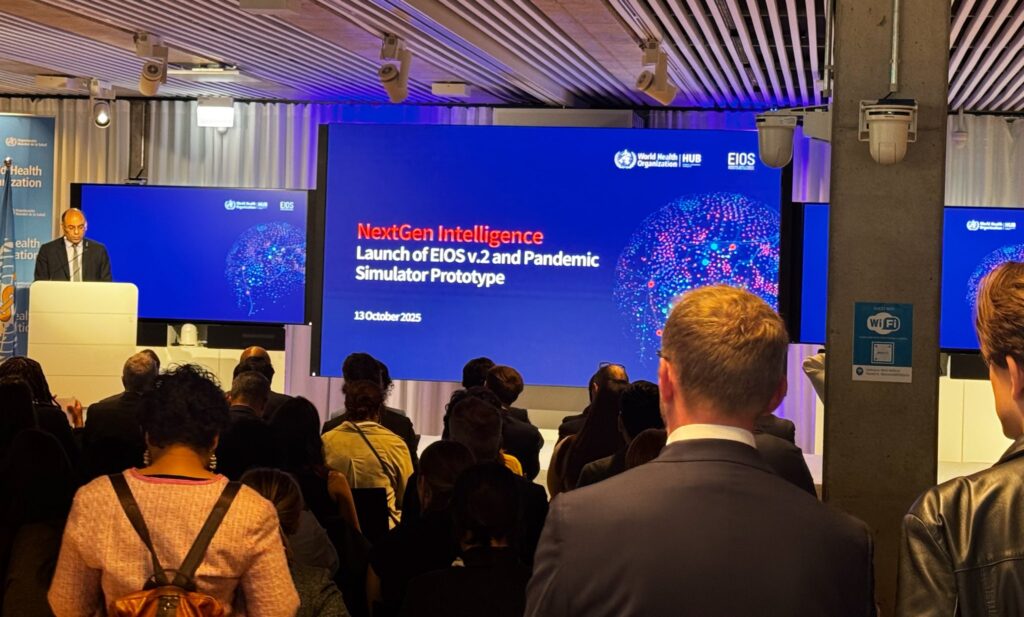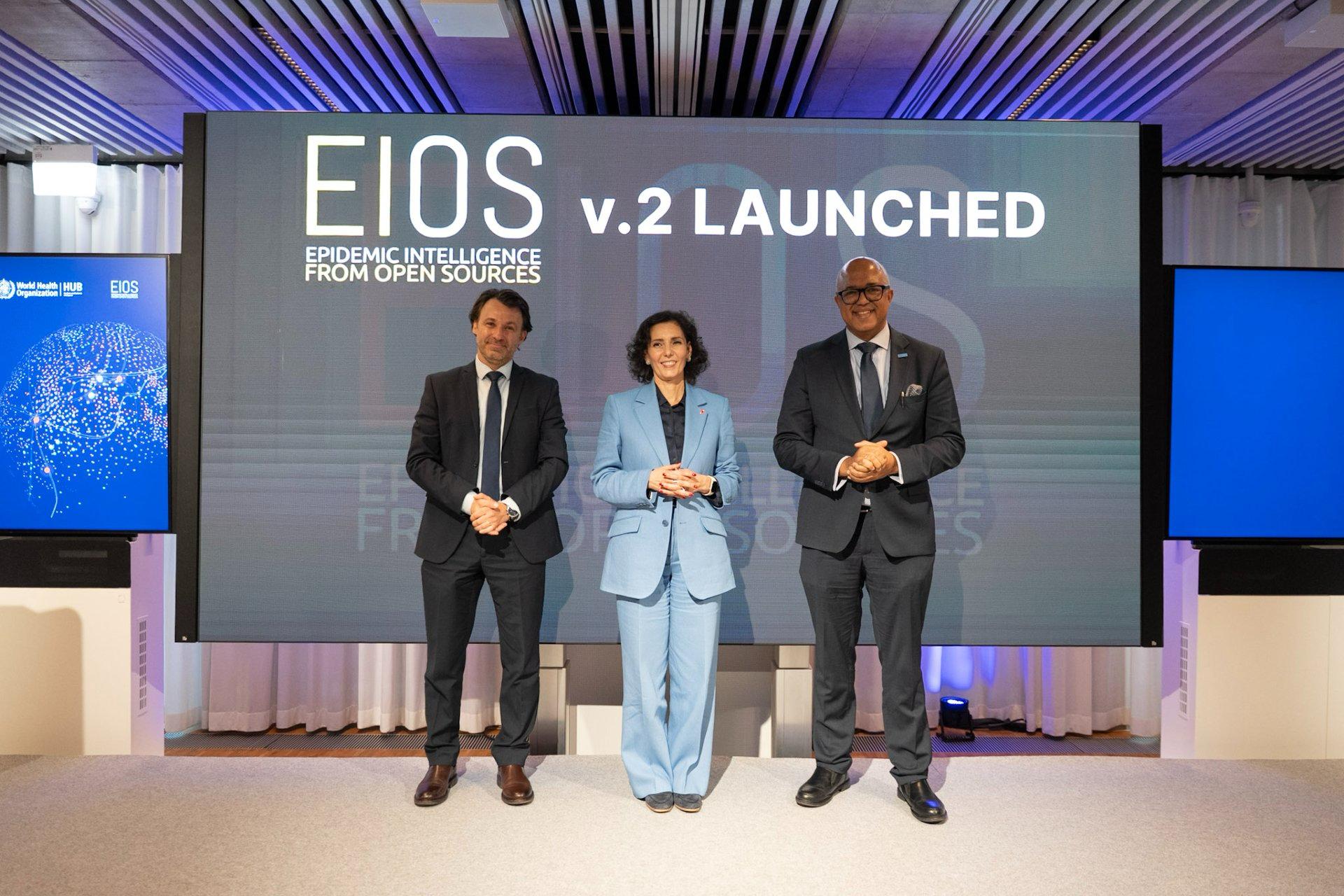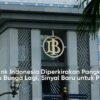EIOS 2.0 was officially launched by the World Health Organization (WHO) on 13 October 2025 in Berlin, Germany. This major update marks a significant step in the transformation of global health intelligence by integrating artificial intelligence, cross-border collaboration, and multilingual access to strengthen early outbreak detection worldwide.
This launch was carried out at the WHO Hub for Pandemic and Epidemic Intelligence in collaboration with the European Commission and the German Federal Ministry of Health. EIOS, abbreviation ofEpidemic Intelligence from Open Sources, has become the backbone of the public health threat monitoring system since 2017. Now, with version 2.0, WHO targets faster, more accurate, and more inclusive monitoring capabilities in more than 110 countries that have joined this system's network.
Evolution of EIOS and Its Background
The EIOS System was first developed to meet the global need for early detection of infectious diseases through open sources. Over the years, this system has collected data from thousands of news sites, social media, and even community health reports to detect potential outbreaks before official reports surface.
The goal is simple yet vital: to detect the first signals of an outbreak so preventive actions can be taken immediately. In the context of the COVID-19 pandemic, this system has proven to help various countries identify early trends in the spread of the disease from news and public posts.
With more than 110 WHO member states as well as 30 global organizations that have joined, EIOS has developed into an important global collaboration network. Every day, this system processes millions of public data entries to generate intelligence that can be used by the government, research institutions, and international health organizations.
Major Update in EIOS 2.0
The latest version of EIOS 2.0 brings major changes to the technical architecture and the data analysis approach. This system has now been rebuilt to support much higher scalability, enabling data processing at large volumes with greater efficiency.
AI integration for smarter analysis
One of the biggest innovations in EIOS 2.0 is the integration of artificial intelligence. This technology helps identify important signals among the sea of public information with greater precision. AI is used to analyze text, images, and audio transcripts from media, even from radio broadcasts, which has now also become a new data source in this system.
This feature enables the system to recognize patterns or keywords related to potential outbreaks, such as an increase in fever reports, respiratory diseases, or mysterious deaths in a region. The analysis results were then forwarded to the health authorities for further verification.
More Resilient Architecture and Scalability
In version 2.0, EIOS is built with a new modular architecture. This enables the WHO and global partners to add new data sources, features, or analytical tools without having to rebuild the system from scratch. With this approach, EIOS becomes more flexible in adapting to future challenges, including the threat of new pathogens or changes in epidemiological patterns due to climate.
Multilingual Access and Global Collaboration
One of the main challenges of legacy systems is language limitations. WHO realizes that a lot of important information appears in local languages. Therefore, EIOS 2.0 introduces a multilingual interface with automatic translation capabilities. This feature enables health workers in non-English-speaking countries to understand and contribute to the system more easily.
In addition, EIOS 2.0 strengthens international collaboration features. Users from various regions can now share data, review signals, and perform joint validation in real time. This is expected to create better coordination in facing cross-border threats.
Global Launch and Support
The launch of EIOS 2.0 is accompanied by a range of supporting initiatives, including online training through the WHO Academy and technical guidelines that are freely available. WHO ensures that this system remains usable at no cost by all member states, reaffirming the commitment that EIOS is a "public good" for the entire world.
The launch event in Berlin was attended by WHO officials, representatives of the European Commission, and the German health authorities. In his speech, the Director-General of the WHO, Dr. Tedros Adhanom Ghebreyesus, emphasized the importance of an open health intelligence system in addressing new global threats.
"EIOS 2.0 brings new capabilities to prevent outbreaks from becoming a global crisis. With cross-border collaboration and AI-based technology, we are now better prepared to face any threat," said Tedros.
Impact and Potential for the Health Sector
This system is designed to complement traditional monitoring systems such as laboratories and hospitals. Data from EIOS often serve as an early signal before cases are officially reported. For example, reports from residents on social media about mysterious symptoms can be an early indicator of the spread of disease in a particular region.
EIOS 2.0 also strengthens disease detection that arises due to non-biological factors, such as conflict, migration, or climate change. In the context of global climate change, rising temperatures and extreme rainfall have been shown to expand the geographic range of transmission of infectious diseases such as malaria and dengue fever. With this new system, such a trend can be monitored earlier.
Preparedness for Facing Future Crises

WHO emphasizes that this system is not merely a detection tool, but also a means of strategic collaboration. Countries can share data quickly without having to wait for formal reports, enabling faster and more coordinated responses.
For example, if a country detects an unusual increase in reports of pneumonia in a particular region, the EIOS system can immediately alert neighboring countries to heighten vigilance. This can prevent cross-border transmission that often occurs in respiratory diseases.
The role of AI in rapid decision-making
AI integration not only helps to sort data, but also provides context. With advanced analytical capabilities, this system can predict the likelihood of a situation escalating based on historical patterns. For example, an increase in local news coverage of a particular disease could be linked to weather conditions, population mobility, or rising trade activity.
WHO calls this approach a form of “augmented intelligence”, namely the integration of human and machine capabilities in the decision-making process.
Implementation Challenges in the Field
Although it brings many advantages, the implementation of EIOS 2.0 also faces a number of challenges. One of them is the digital divide in several developing countries that still have limited internet infrastructure. In addition, intensive training is required so that healthcare workers can use this system optimally.
WHO plans to provide ongoing technical support to ensure that every country can participate in the global health intelligence network. With this inclusive approach, it is hoped that no country will be left behind in the early detection of outbreaks.
Collaboration with Indonesia and Southeast Asia
Indonesia, as one of the WHO members actively involved in early disease detection efforts, has a great opportunity to leverage EIOS 2.0. This system can be integrated with the Ministry of Health's national surveillance program, especially in the context of zoonosis surveillance and infectious diseases that frequently occur in tropical regions.
In addition, the Jabodetabek and Banten regions with high population density could be ideal pilot areas for the implementation of EIOS's AI analytics feature. Collaboration with the WHO Hub in Berlin can strengthen national preparedness against emerging disease threats.
The Future of Global Health Intelligence
The launch of EIOS 2.0 reflects a paradigm shift from reaction to prevention. WHO hopes that this system will serve as the foundation for building global health security based on real-time data and cross-sector collaboration.
As threats such as pandemics, antimicrobial resistance, and climate-related crises increase, open-source-based early-detection capability becomes very important. EIOS 2.0 not only monitors diseases, but also maps risks, predicts trends, and assists evidence-based policymaking.
Through this step, the WHO demonstrates that technology and global solidarity can go hand in hand in safeguarding the health of humanity.
The launch of EIOS 2.0 marks an important milestone for the international health community. This system is not only a technological innovation, but also a symbol of genuine global cooperation. With cross-border collaboration, artificial intelligence, and the spirit of data openness, the WHO emphasizes that the future of global health security begins with early detection and boundless collaboration.
For readers who want to gain a deeper understanding of the digital outbreak surveillance system and WHO's global collaboration, visit the related article on Olam News about the transformation of global health data and AI initiatives for future pandemics.
Discover more from Insimen
Subscribe to get the latest posts sent to your email.










